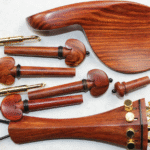Sparks hazards at work are caused by abrasive wheels. These abrasive wheels, also known as grinding wheels, are tools that are used for grinding, cutting, and polishing various materials. They are composed of an abrasive compound that is made up of small, hard particles that are held together by a bond. When the abrasive wheel is in use, the particles on the surface of the wheel wear away, revealing new, sharp particles underneath.
In this blog, we will be discussing these spark hazards caused by these abrasive wheels, as well as how to avoid them.
What are Abrasive Wheels?
Abrasive wheels are used in a variety of industrial and construction settings, including manufacturing, metalworking, and automotive repair. They are essential tools for many types of grinding, cutting, and polishing operations.
How do Abrasive Wheels Cause Sparks?
When a tool with an abrasive wheel, such as an angle grinder is applied to a metal, it ejects small metal particles. As these particles can become oxidized, when they do, they become hot enough to glow due to the heat of oxidization, and in turn, become sparks.
There are several types of abrasive wheels, each designed for a specific purpose. For example, some abrasive wheels are designed for use on metal, while others are better suited for use on wood or plastic. So, not all abrasive wheels might cause sparks. Some wheels are used for rough grinding, while others are used for fine finishing, each using different materials in their respective work.
It is important to use abrasive wheels safely in the workplace. Abrasive wheels can be dangerous if they are not used properly, as they can shatter or break, causing injury to the operator or bystanders. To use abrasive wheels safely, it is important to follow proper safety procedures and to wear appropriate personal protective equipment, such as goggles and gloves.
How to Avoid Spark Hazards in the Workplace
There are several ways to minimize or prevent sparks when using abrasive wheels:
1. Use the Correct Abrasive Wheel for the Material Being Worked On
Different abrasive wheels are designed for use on different materials. Using the correct abrasive wheel for the material being worked on can help reduce the volume of sparks that are produced.
2. Keep the Abrasive Wheel in Good Condition
Abrasive wheels that are worn or damaged can produce more sparks than wheels that are in good condition. Regularly inspecting and replacing worn or damaged abrasive wheels can help reduce the total amount of sparks that are produced, thus making it safer for use.
3. Use the Correct Speed
Abrasive wheels should be used at the recommended speed for the size and type of wheel being used. Using an abrasive wheel at the incorrect speed can cause it to overheat and produce more sparks.
4. Use a Coolant
Using a coolant, such as water or oil, can help reduce the sparks produced by an abrasive wheel. The coolant helps to keep the temperature of the wheel lower, which can reduce the likelihood of sparks being produced.
5. Use Appropriate Personal Protective Equipment
Wearing appropriate personal protective equipment, such as goggles and a face shield, can help protect the operator from sparks and other flying debris. Make sure to use these guards as well as any other protective devices as recommended by the manufacturer. These devices can help protect the operator from flying debris and sparks.
6. Follow the Manufacturer’s Instructions
Always read and follow the manufacturer’s instructions for using abrasive wheels. These instructions will provide important information about the safe use and handling of the wheel.
7. Use the Correct Mounting Procedures
Abrasive wheels must be mounted correctly on the machine to be used safely. Follow the correct mounting procedures as outlined in the manufacturer’s instructions or a reputable reference. This is both for your safety and for the longevity of the tools used.
8. Secure the Workpiece
Make sure the workpiece is securely clamped or held in place before beginning work with an abrasive wheel. This will help prevent the workpiece from moving or slipping during the grinding process.
9. Keep the Area Clean as Well
Keep the work area around the equipment and machinery clean and free of clutter. This will minimize the risk injuries.
10. Never Leave the Machine Running Unattended
Never leave the machine running unattended while the abrasive wheel is in use. This can cause severe accidents and incidents.
11. Training is Always a Good Option:
Consider brushing up on your skills for using handcrafting tools that use dangerous abrasive wheels. A session or two of abrasive wheel training can help jog the memory.
By following these precautions, you can help minimize or prevent sparks when using abrasive wheels.
Conclusion
Sparks in industrial or construction work are a part of the job, but where there is a risk, there is the option for mitigating that risk. Here, we have looked at how sparks are caused by tools that use abrasive wheels, and how to avoid getting dangerous sparks from them.















